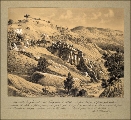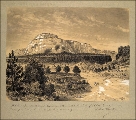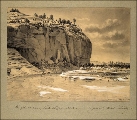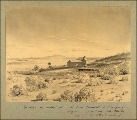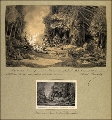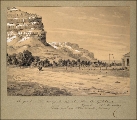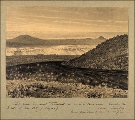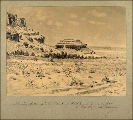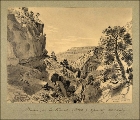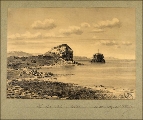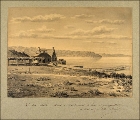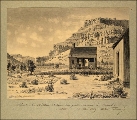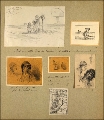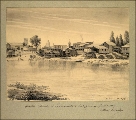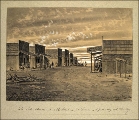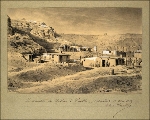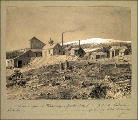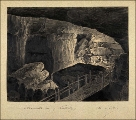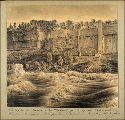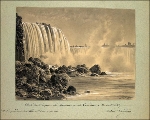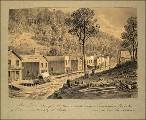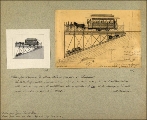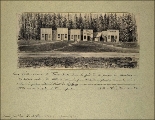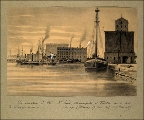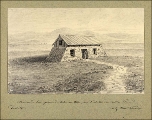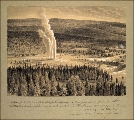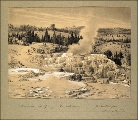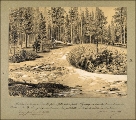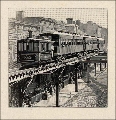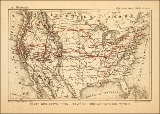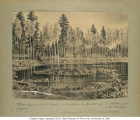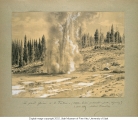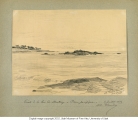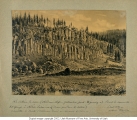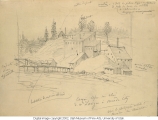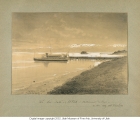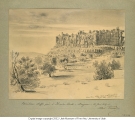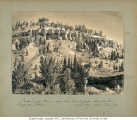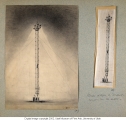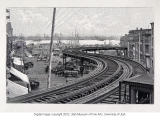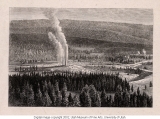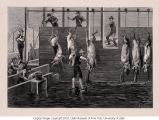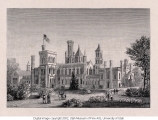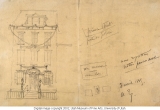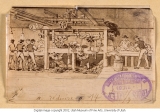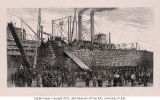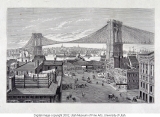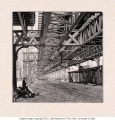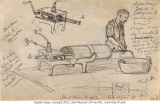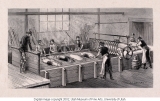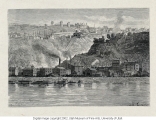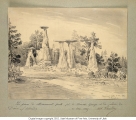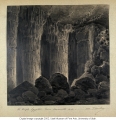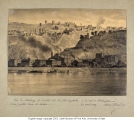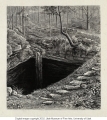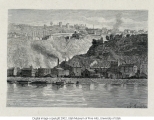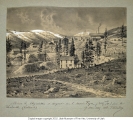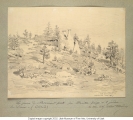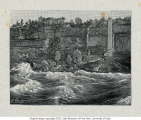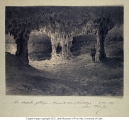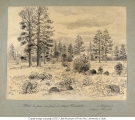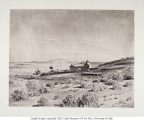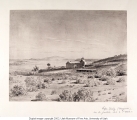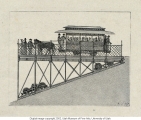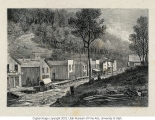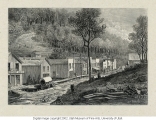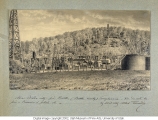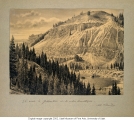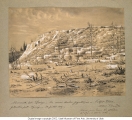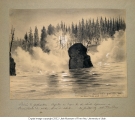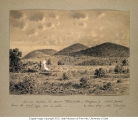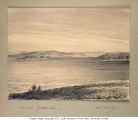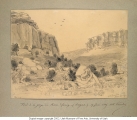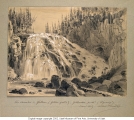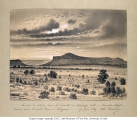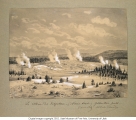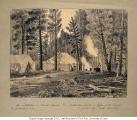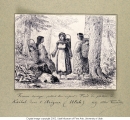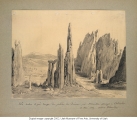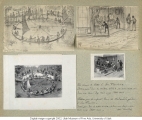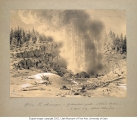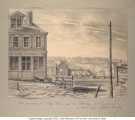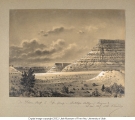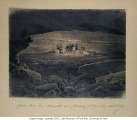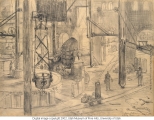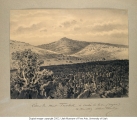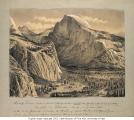| Identifier |
1978_210_mainStKanab.jpg |
| Title |
Main Street in the Village of Kanab (Kane County, Utah) |
| Alternate Title |
La grande rue du village de Kanab (Kane County, Utah) |
| Artist's Notation |
"dessin paru dans le Tour du monde (Hachette)" |
| Creator |
Tissandier, Albert 1839-1906 |
| Subject |
Cities & towns--Utah--Kanab--1880-1890; Cliffs--Utah--Kanab--1880-1890 |
| Published Location |
Appears, engraved by A. Kohl, in Albert Tissandier's article "Voyage d'exploration dans l'Utah et l'Arizona, Kanab et le plateau de Kaibab", in Le tour du monde, v. 51, 1326e livraison ([June?] 1886), p. 357, with the caption "Grande avenue de Kanab". http://visualiseur.bnf.fr/Visualiseur?Destination=Gallica&O=NUMM-104977&I=360&Y=Image (with poor quality reproduction of the image) |
| Short Essay |
Nestled against the buttes of Kane County, Kanab was the central point for travelers exploring the surrounding Canyons of northern Utah and southern Arizona. Tissandier's drawing of Kanab's Main Street depicted some of the modest, well kept homes in the small town. There was neither hotel nor other accommodations for tourists in Kanab in 1885 so travelers were dependent on the hospitality extended them by the townspeople. Alternatively they could camp in the ranchos outside the city. There was only one shop where provisions could be purchased and where Tissandier bought "some canned goods, tea, coffee and other necessary items". There was, he noted in his journal, little variety or choice. If Kanab's solitary store provided only basic necessities, the surrounding wilderness offered far less. Water was nearly impossible to find in the deserts that were inevitably on the route to a canyon or other attraction. It was necessary, therefore, for Tissandier's party to return frequently to Pipe Spring, one of the few places where fresh water was available. With limited storage space a traveler needed to ration water to last for at least a week, the length of time for a round trip to one of the canyons. Tissandier described the "ordinary life of a tourist after leaving Kanab" as getting up at four in the morning, eating at five, after which the party set out on that day's trip. Nathan Adam and his son, acting as guides, made certain that there would be enough springs located on their route to insure sufficient water for them and their horses. The horses, Tissandier noted, were tired and often had nothing to eat but some "scanty grass" and sometimes no water. They were, however, accustomed to this diet and somehow maintained the necessary strength to walk twelve to fifteen hours a day on the more difficult stages of the journey. When the intense heat of the desert sand rendered the stored water unfit to drink, the party was left with only coffee. The horses, on the other hand, had to rely on stagnant water from the winter's thaw or a recent storm that had collected in depressions in rocks. Food consisted of "bacon, preserved salmon, water and bread that Nathan prepared three times a day for each meal". The bread, described as a type of "galette cooked in a frying pan over a fire of dry branches", was likely a sourdough start mixed with flour and water for each meal. The party rested each afternoon, then traveled until seven o'clock when they slept under blankets in the forests or on the desert sand under the stars. Although Mormons traveled to Arizona in this way, Tissandier admitted to an initial feeling of shock at the lack of comfort. However, he became accustomed to the "little miseries" that soon seemed unimportant when compared to the natural splendor of the surrounding landscape. |
| Publisher |
Utah Museum of Fine Arts |
| Contributors |
Mary F. Francey |
| Date |
1885-06-05 |
| Type |
Image |
| Format |
application/pdf |
| Source |
Albert Tissandier: Drawings of Nature and Industry in the United States |
| Language |
fra |
| Rights Management |
Digital image c2001 Utah Museum of Fine Arts, University of Utah |
| Source Physical Dimensions |
34.29 cm High x 40.64 cm Wide |
| Source Characteristics |
Graphite and brush applied ink |
| Light Source |
Kaiser Softlite ProVision 6x55W flourescent 5400K daylight |
| Archival Resolution |
TIFF: 4878 x 4202 pixels |
| Display Resolution |
JPEG: 900 x 785 pixels |
| Bit Depth |
36-bit color |
| Scanning Device |
Leica S1 Pro scanning camera; Hasselblad CFi 50mm F/4 lens; f/11 |
| Exhibit Catalog |
ISBN: 0-9657215-0-7; Library of Congress Catalog Number: 2001094211 |
| Setname |
uu_umfa_at |
| ID |
415793 |
| Reference URL |
https://collections.lib.utah.edu/ark:/87278/s6bk1cds/415793 |

